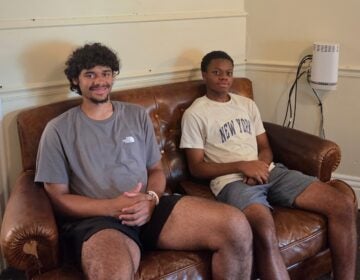Halting the spread of fake news amid ‘flurry of undecipherable stuff’
“Fake News” is dominating headlines these days.
Not only do sensational stories that are complete fabrications spread virally on social media and the Internet, fake news has become President Trump’s pet phrase when trying to discredit stories he dislikes or certain media outlets like CNN or The New York Times.
Yet the phenomenon of people believing fairy tales, such as former President Obama signing an executive order banning the Pledge of Allegiance or the Pope endorsing Trump for president, is real. To many people, the trend is a disturbing one for social discourse and democracy itself.
“We’ve had a splintering and a diffusion of so-called facts and information itself,” Charles Lewis, founder of the Center for Public Integrity, said after a recent forum on the topic at his alma mater, the University of Delaware. “It’s become a little bit of a blizzard of indecipherable stuff. Some if it is fact-based, much of it is not.”
The spread of fake news, coupled with widespread distrust of the legitimate media, has made for a confusing landscape for readers and viewers.
Consider the viewpoint of University of Delaware junior Antonio Ahmed-Garcia, who said he doesn’t trust any news he reads, even in the biggest newspapers and networks or their websites.
“I feel like in a sense you can’t kind of trust them because it’s all personal beliefs and opinions that are being written on all these big journalism posts,” Ahmed-Garcia said. “But you can take bits and pieces from each article and make your own definition of it.”
A determined backlash against the prospect of a “post-truth world” has begun, though.
Facebook and Google have launched initiatives to help readers detect and flag stories that might not be true, to stop their dissemination and what one journalist calls the “tremendous velocity” with which they spread.
At UD and local high schools such as the Conrad Schools of Science, efforts are under way to stop such nonsense from infecting the public.
Conrad teacher Leigh Weldin said she found it difficult to have classroom discussions about political races or issues during the 2016 presidential election. Students couldn’t agree on facts or shared falsehoods as truth. So she developed a lesson in which students evaluate whether headlines or stories are real and shows them ways to differentiate.
“As young citizens they need to learn where their news is coming from, what is credible, so they can make informed political decisions,” Weldin said. “Because they are our future. They are ones who are going to be part of the elections. They are going to be the ones writing public policy. I want to teach them skills right now.”
UD’s library now has a web page to help students navigate the clutter. The tips recommend students consider the source, check their biases, and see if other outlets carry the same story. In April the school held what it called the Fake News Blues forum, drawing about 300 people to Mitchell Hall.
Lewis joined a panel of current and former journalists who explored why fake news gains traction. Polarization of politics. Distrust of the media. Newspaper staff cuts. A public that is addicted to social media but lacks discipline to verify a fairy tale before sharing it.
“We have developed echo chambers with the two parties in America having their own realities or their own efforts to tell their best story,” said Lewis, now executive director of the Investigative Reporting Workshop. “We have started to splinter the truth and it’s my truth and your truth.”
Nichole Dobo, an education reporter who left The Wilmington News Journal amid steep staff cutbacks, now writes for the Hechinger Report. She fears the ripple effect of fake news on American society.
“Social media allows lies to spread like wildlife. And the really bad part, the scary part is there are fewer fighters, journalists in local communities, there to put out the fires. That is what troubles me,” Dobo told the audience.
“It used to be that people could agree on a certain set of facts that they read in their morning paper and then we debated about public policy. But when you can’t even agree on the basic facts, when you hear people say, ‘that’s not actual true because my opinion is X, Y, Z,’ where do you even go from there?”
Dobo cited a 2016 Stanford University study that found fewer than 10 percent of high school and college kids realized one website was run by a lobbying group. Even though they were allowed check Google.
“Folks, that is a 911 emergency,” she said.
Jason Levine, who oversees sports and the editorial page at the Wilmington paper, urges the public to stop being so willing to gobble up what social media serves.
“It’s very easy to sit there on your computer or on your phone and read stories that you psychologically agree with because the algorithms are feeding them to you when in fact you need to be challenging yourself to think beyond what your opinion already is,” Levine said.
WHYY is your source for fact-based, in-depth journalism and information. As a nonprofit organization, we rely on financial support from readers like you. Please give today.





